Social media management is used by millions of people as a way of interaction, connection, and experience sharing.
The most recent information from Statista indicates that more than 62% of people on earth use social media.
It’s never been simpler to stay in touch, and companies are realizing that social media can help them connect with their target market. Brands have the ability to increase their reach and build their client relationships equally using social media for influencer marketing, digital customer interactions, and online advertising.
On the surface, social media management could seem easy. However, it’s not really taking a walk in the park. Because the environment of digital marketing is always changing, it can be challenging for firms to manage it successfully. That’s why we wrote this in-depth guide to social media management to support the online expansion of your company.
What Is Social Media Management?
Modern buyers are becoming more dependent on social media sites.
67% of consumers on the internet had made purchases using social media platforms, per a VML survey. This pattern highlights the importance it is becoming for companies to establish and keep a strong internet presence.
Social media management—which includes content production, post planning, and audience interaction material across social platforms—becomes important in this situation.
Why Is It Important to Manage Social Media?
Today, social media management is important for the success of any organization. In order for customers to engage with your business online, it “creates a unified tone and voice,” according to David Salazar, a social media strategist at DMIS.
“This identity helps companies reach new audiences and communicate in an understandable manner what the company does and what it stands for.”
How Do Social Media Marketing and Management Differ From Each Other?
Although the terms “social media marketing” and “social media management” can be utilized together, they refer to two different facets of an online brand’s presence.
Keeping a brand’s social media profiles up-to-date and organized is known as social media management. This covers activities like updating material, keeping an eye on comments, replying to communications, and analyzing performance indicators.
However, social media marketing focuses on using a variety of online platforms in order to market a product or brand. To increase visibility and promote sales, it employs methods including expert relationships and sponsored promotion.
For an internet business to succeed, social media marketing and management are both important. Businesses may more efficiently manage resources and set goals for their projects when they are aware of the differences between the two.
How to Manage Social Media
Understanding the key procedures in social media management will help you create a powerful online presence, no matter your role—marketer, enterprise manager, or small business owner. The task may appear difficult due to all of the parts involved. However, we are here to help you understand the basic steps and resources required for successfully handling your social media accounts.
To develop a social media management strategy that produces positive outcomes, keep the following advice in view:
1. Review your present social media plan.
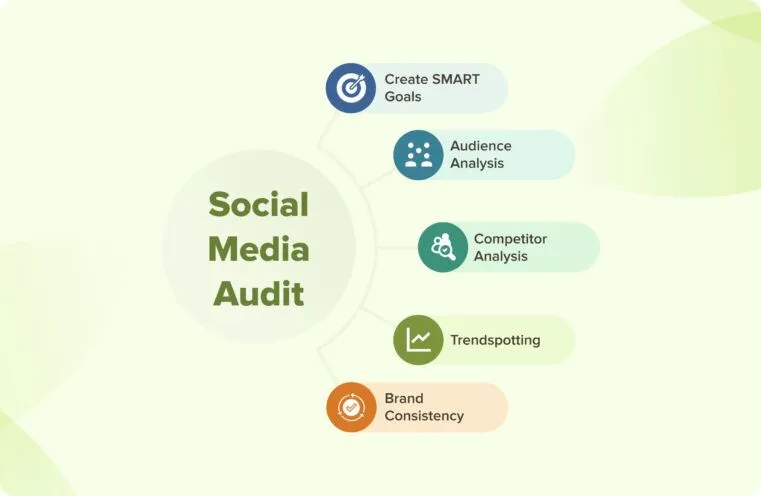
In order to maintain the success of your social media management plan, you have to continually assess it, no matter how well it worked in the past. Thus, a key element of smart social media management is the regular auditing process.
An online presence inspection for your brand is a social media review. Regular reviews make sure that your efforts are producing what you want and that your social media strategy is in line with your current goals and objectives.
- Targets: According to survey data from Schedule’s Trend Report, marketers that actively establish goals have an about four-fold higher chance of success than those who don’t. Start by evaluating your present social media aims and making sure they match your company’s goals.
- Audience: According to a Salesforce survey, 84% of clients believe that earning their business requires treating them like a person. This underlines how important it is to understand your audience in order to develop a successful social media management plan.
- Other companies: Research what other people are doing on social media and take note of their achievements and errors. 90% of Fortune 500 companies, according to Emerald, research competitors to obtain an edge. Determine their main platforms, audience engagement, strategies, and methods.
- Popular Trends: In an Adobe survey, 76% of marketers said that they think the last two years had seen more changes in marketing than the previous fifty. This means that in a digital landscape that is changing quickly, maintaining up to date with trends is important for modifying your tactics and remaining relevant.
- Regularity: Make sure that your brand looks equally on all social media channels. Brand identification and understanding improve by maintaining continuity in appearance, tone, voice, and messaging. In addition, it could lead to higher sales.
You can optimize your efforts, maintain brand consistency, and remain dynamic with regular audits of your social media strategy. Focus on goal-based tracking and review of your performance, take note of your competitors’ strategies, and keep your target audience’s interests at the core of your approach.
- Understand the Platforms for Social Media
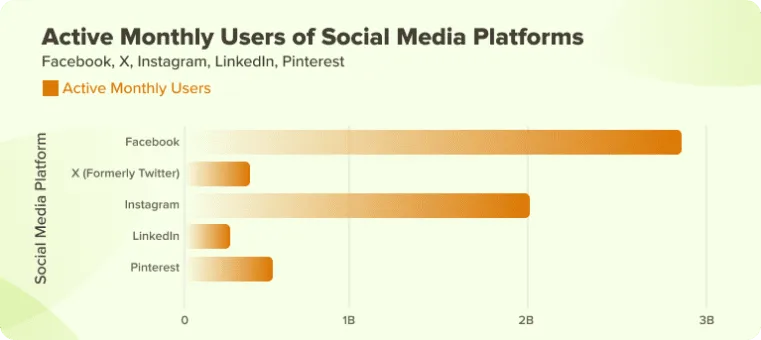
Selecting the right platform to launch your company’s social media presence is important for developing a successful social media management plan. This is important because every platform offers different features and serves a different age group.
Let’s review the most popular social media networks as of right now:
With more than 2.9 billion active users each month, Facebook is without a doubt the biggest and largest social networking platform. With features like Pages, Groups, and Marketplace, among many others, it helps businesses reach out to and connect with their target audience. Almost all business types, from small local businesses to large organizations, can benefit from Facebook.
X
X, which is formerly known as Twitter, is a well-liked forum for exchanging news, ideas, and updates about your company in real time. With more than 415 million active users each month, businesses may connect with customers through paid advertising and organic reach. X is beneficial to parts including sports, media, technology, news, and media where quick interaction is important.
Instagram is a great place for companies to showcase their products and tell their brand stories through photos and videos. With over 2 billion monthly active users, Instagram connects with people through interaction tools including reels, stories, and IGTV. Because it is popular with younger audiences, marketers trying to reach influencers and creators of visual content would do well with it.
Professional social media site LinkedIn is well known for being the best for B2B networking and marketing. With more than 310 million monthly active users, LinkedIn is a valuable tool for organizations looking to establish their brand, connect with industry professionals, and exchange creative content. LinkedIn is a useful resource for marketing and developing talent methods.
Pinterest is a website that promotes graphical research. Users are able to make and share boards with their favorite concepts and pictures on them. Pinterest is a popular tool used by businesses to promote their products, build brand awareness, and improve website traffic. Pinterest is well-liked in the DIY, fashion, and home décor industries, with about 518 million active users per month.
- Set a posting timetable.
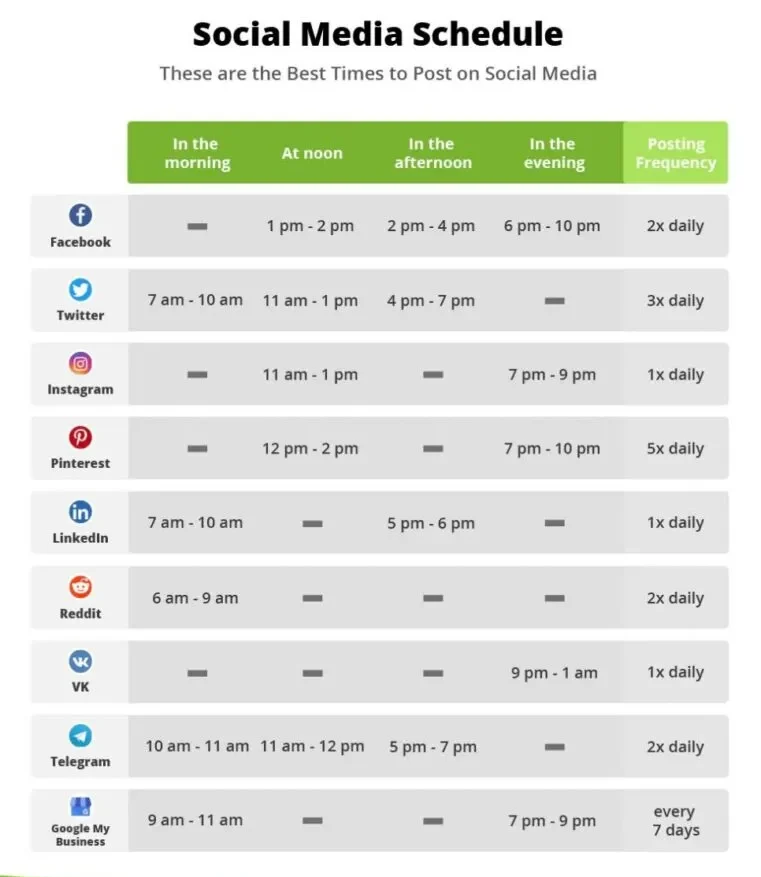
Your work has a greater chance of getting viewed by more people if you post regularly and consistently. A Hubspot analysis found that businesses with 16 posts or more a month attracted nearly 3.5 times as much traffic as those with fewer posts per month.
Furthermore, regularly providing useful information builds trust among customers. According to a research report, 57% of consumers follow brands in order to find out about new offerings. By keeping a regular posting schedule, you can keep these followers interested and connected. Therefore, this creates attachment to the company and its products.
Create your posting routine.
Maintaining a regular posting schedule is important for building audience engagement and advancing your online presence. By planning your posts, you can make sure that your content is seen by your audience at the most effective times and prevent overloading your followers with information.
- Facebook: 1-2 times per day
- Instagram: 3-5 times per week
- X: 2-3 times per day
- LinkedIn: 1-2 times per day
- Pinterest: At least once per week
Manage Your Content Mix
Interaction and brand loyalty are boosted by creating a mix of promotional and value-added content. This makes a big difference in any social media strategy’s overall performance. On the other hand, extensive brand promotion might be detrimental. In a research study, 46% of social media users said they would unfollow a brand if it shared too much promotional content.
- Create better content.
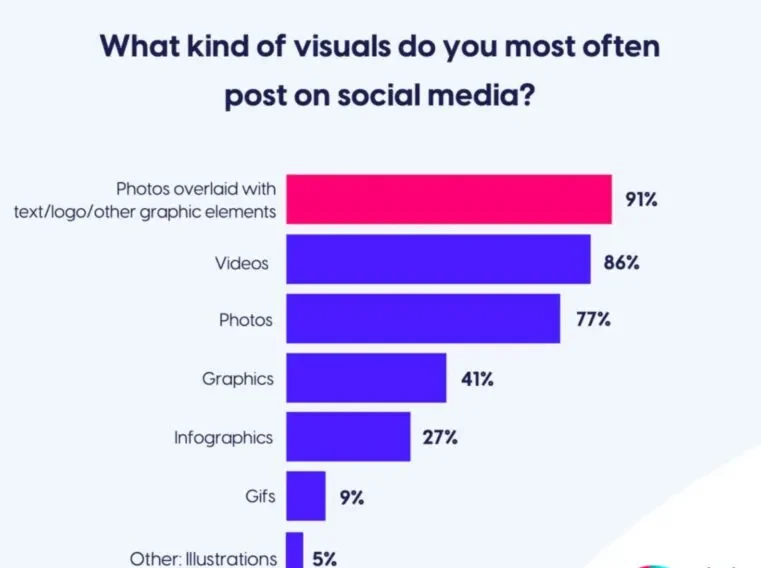
Posting regularly is important, but it’s just as important that the material you provide benefits, informs, offers, or inspires your audience. Sharing unsuitable or badly written information might damage the trust and popularity of your company. Planning, producing, and selecting excellent content need to be your primary focus when it comes to your social media management method.
We’ll go over some of the best content types below that can help you improve your social media presence and establish deep connections with your audience.
Images
Graphic content is ideal for social media platforms since it is very appealing and easy to consume. When used in social media posts, high-quality photographs may very quickly capture your audience’s attention and communicate your message.
Posts containing visuals get 650% more engagement than text-only posts, claims Adobe Spark. This proves that using photos in social media marketing greatly increases engagement and efficacy.
Videos
A 2020 The study’s research highlights the importance of social media video sharing. According to the report, 87% of video marketers say that their investment in video content yields a positive return on investment (ROI). Additionally, the study shows that 84% of customers have been convinced to buy a good or service after watching a brand’s video. This indicates that video content has a significant impact on revenue, brand awareness, and user engagement.
Information Created by Users
User-generated content (UGC) plays an important part in building a strong sense of community among your audience by showcasing the real experiences of your customers. User-generated content (UGC) is any kind of content—pictures, videos, reviews, or testimonials—that is produced by customers or users compared to the brand. Your target audience is kinder to this genuine and organic content than they are to carefully planned marketing messaging.
- Make social media profiles better.
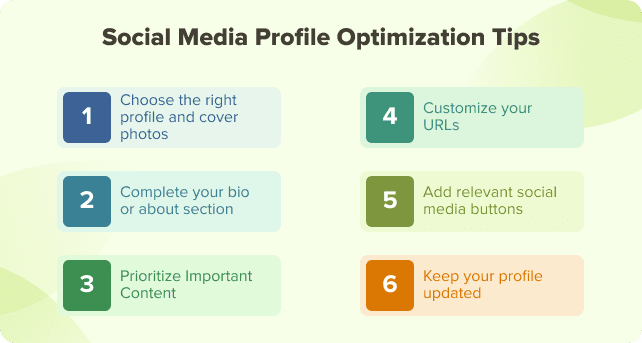
According to an SDL survey, 60 percent of youth want marketers to provide them with a uniform experience on all digital platforms. As a result of this discovery, brands must give time and funds to maximizing their online presence across a range of channels. Easily managed social media accounts can foster consumer interaction, successfully convey a brand’s identity, enable conversations with customers, and assist companies in meeting their overall marketing objectives.
- Select the Correct Profile and Cover Photos: Your visitors form an opinion of you based on their first reaction to your profile photo, which is typically your logo. Make sure the photos are of the highest quality and correctly represent your company.
- Fill in Your Bio or About Part: In only a few words, you may explain to users what your business stands for in the bio part. Highlight your special selling points and include industry-related keywords.
- Highlight Important Content: Make sure that your website, contact information, and product offerings are easily found or available, especially considering the limited space on most platforms.
- Choose Your URLs: You can alter the URLs for your pages or profiles on social media sites like Facebook and LinkedIn. To make it simpler for users to find and share, choose a straightforward and memorable URL that is in line with your branding.
- Add Relevant Social Network Buttons: To make it simple for visitors to follow and share your material, include social network buttons on your website and blog. Provide users with a variety of options by including icons for your active social network accounts.
- Keep updated platforms: Check that all the information on your social media platforms is current on a regular basis. If your services, branding, or contact information changes, you should update your profiles as soon as possible to preserve professionalism and confidence.
- Measure Your Success on Social Media
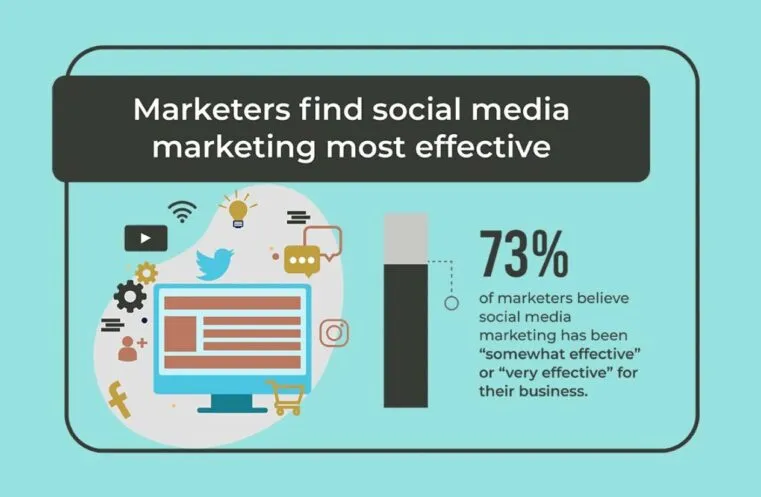
Social media platforms are now essential for companies and brands looking to improve their online visibility, connect with their target market, and increase sales. According to a Hubspot study, 73% of marketers said social media marketing had been “somewhat effective” or “very effective” for their business. This highlights even more how social media platforms can help a brand become more visible and grow.
In order to optimize the effects and cost of social media marketing, companies need to constantly track and evaluate their performance across several channels.In this case, key performance indicators, or KPIs, are helpful.. KPIs allow brands to analyze their performance on social media platforms more effectively by providing quantitative indicators to assess and monitor the success of social media strategy.
- Achieve: The reach indicator calculates how big of an audience you could have on different social media sites. Tracking reach allows you to determine the possible user base for your material.
- Interest: This describes how much a person interacts with your content through likes, comments, shares, and other interactions. High engagement rates are typically a sign that your content generation methods are working.
- Impressions: no matter if people click on your content or not, this metric counts the number of times it has been shown on their feeds. Strong first impressions may expand the audience and raise brand awareness.
- Follower Growth Rate: Tracking your followers’ growth or decline over time will enable you to evaluate how well your audience attraction and retention methods are working.
- The click-through rate (CTR) measures the proportion of people that click on any links you post on your social media accounts. A high click-through rate (CTR) suggests your content is interesting and connects well with your audience.
- Conversion Rate: Calculating the proportion of visitors who finish a certain activity (like buying something or subscribing to your newsletter) after viewing your content shows how well your social media marketing is working to achieve your goals.
Learn skills in social media management. With DMIS Experts
There’s more to social media management than just updating your feed and crossing tasks off your list. It is an essential component of your internet presence that may substantially boost the profits you make. Achievement in this field requires full-time concentration due to its variety.
You can get project management support from the knowledgeable social media managers and marketing experts at DMIS Internet Marketing Agency. DMIS provides proven techniques and specific strategies to help you maximize the return on your investment in digital marketing growth, from increasing engagement to driving sales.
We gain clients’ trust all over the world because of our commitment to honesty, quickness, and staying ahead of trends. Get in touch with us right now to launch your brand onto the social media landscape.



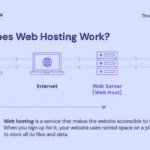

Leave a comment